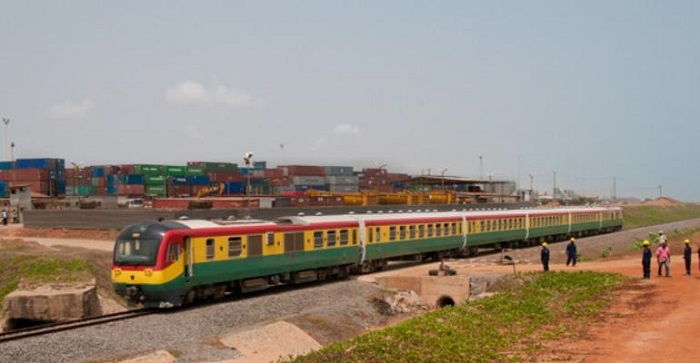The Nana Akufo-Addo led government intends to invest US$ 12.9bn in rail network expansion projects in Ghana in a bid to make this mode of transport one of the fundamental channels of mobility across the West African country.
This plan whose financing will come largely from private investors is linked to a national rail transport strategy connected with 13 other projects that have been born within the framework of the United Nations Sustainable Development Goals (SDGs) and the African Union’s Agenda 2063.
The key projects that will benefit from this investment
According to the roadmap drawn up, approximately US$ 5.8bn of this investment will go towards a project to develop a light rail network (LRT) comprising seven corridors in Kumasi, the capital city of the Ashanti Region.
This city is reportedly faced with challenges related to mobility owing to fairly rapid urbanization and exponential population growth. The LRT project is scheduled to start in 2025. It will be carried out on the basis of a public-private partnership (PPP) financed 70% by debt and 30% by equity.
The plan also concerns the construction of a 672 km railway line (the Central Spine) which will run from the center of Kumasi to Paga, near the border with Burkina Faso. This vast project, the cost of which is estimated at US$ 3.3bn, incorporates several axes of the railway interconnection project between Ghana and Burkina Faso.
The start of work on the Central Spine project is scheduled for 2023 and it’s commissioning six years later.
The projects linked to the UN SDGs
The projects linked to the UN SDGs are still at an early stage. Among these projects is the Trans-Ecowas project, which will interconnect 12 West African countries members of the Economic Community of West African States (ECOWAS) via rail.
Project overview
The Kumasi-Paga railway project, also known as the central spine railway project involves the construction of approximately 559k kilometer rail to link Kumasi in the central part of Ghana to Paga, which is in the north, on the border with Burkina Faso.
Upon completion, the project, which is in line with the Railway Master Plan completed in 2013, will improve rail and logistics infrastructure as part of an integrated transport network in Ghana.
It will also help to improve services to customers and reduce the cost of transportation, especially in trade to and from the hinterland and the Northern regions of Ghana, as well as the Sahelian countries. Furthermore, it is expected to facilitate the transportation of passengers and freight cargo from the South to the North of Ghana and onward to Burkina Faso and the Sahelian region.
Reported earlier
Feb 2018
Ghana to start a feasibility study on Kumasi-Paga Railway Line
The government of Ghana is set to start the feasibility study for the construction of the Kumasi-Paga Railway from Kumasi to Paga which will link up with neighboring Burkina Faso. Meanwhile, the government has completed its official pre-feasibility engagements.
The six months study will provide information regarding the construction of the line, known as the Central Spine in Ghana’s railway blueprint. It is expected to include a comprehensive survey and map out the right-of-way to assist with the development of a business case and attract private sector interest in the project.
A consortium led by Vision Consult Ghana Limited will undertake the studies regarding the Central Spine from Kumasi to Paga. Other partners in the consortium are Gauff Ingenieure and ILF Consulting Engineers, both from the Federal Republic of Germany.
Competitive tendering process
The consortium was procured through a competitive tendering process in line with the Public Procurement Act, 2003 (Act 663) as amended in 2016 (Act 914) of the Republic of Ghana.
As an important greenfield rail development project, Sector Minister Joe Ghartey strongly believes there is the need to undertake a feasibility study to determine the economic, financial, social, and environmental viability of the proposed 595km rail corridor between Kumasi and Paga.
Transportation cost
The development of the project, which is in line with the Railway Master Plan completed in 2013, will improve rail and logistics infrastructure as part of an integrated transport network in Ghana. It will also help to improve services to customers and reduce the cost of transportation, especially in trade to and from the hinterland and the Northern regions of Ghana, as well as the Sahelian countries.
At a recent meeting held in respect of the Study, the consortium led by Professor Kwasi Kwafo Adarkwa expressed their readiness to start work, saying they had all their technical experts in place. The meeting was with high-level officials from the Ministry of Railways Development, Ghana Railway Development Authority, and Ghana Railway Company Ltd. under the chairmanship of Deputy Minister for the Ministry, Hon. Andy Kwame Appiah-Kubi.

